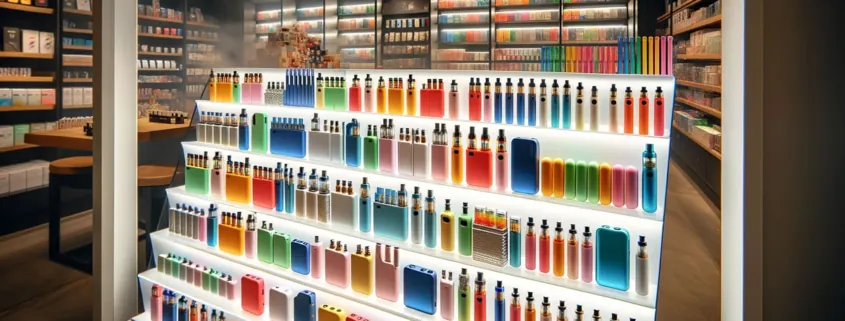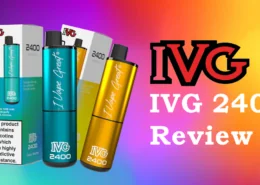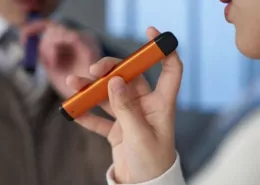The Complex Dilemma of Regulating Disposable Vapes
Disposable vapes like Elf Bar and Lost Mary have exploded in popularity, becoming a cultural phenomenon embraced by youth. But this trend alarms officials and poses complex questions around regulation.
Walk the streets of any major city today and you’ll likely breathe clouds of sweet disposable vape aerosols instead of traffic exhaust. Flavors like Blue Razz Lemonade and Banana Ice pervade the air.
These sleek, convenient devices have seen use skyrocket among adults. Alarmingly, they’ve also proven wildly popular with youth. Surveys show disposables becoming the predominant vape type among teens. This has officials scrambling to respond.
A 2023 UK report from Action on Smoking and Health (ASH) found 20% of kids had tried vaping, with nearly 70% using disposables most often. In the US, the CDC reported disposables were the top vape choice among American youth.
After declining youth vaping rates in 2021, the arrival of disposables triggered a steep climb. In the UK, teen vaping tripled in just three years. And increased vaping hasn’t led to a corresponding drop in smoking, meaning overall nicotine use is rising.
This trend has sparked medical calls for bans and school vape detectors. Now the question becomes: are disposables a fleeting fad, or a recidivist habit among youth? Experts argue the time is now to address this dilemma.
Why Disposables Appeal to Youth
Various factors drive the popularity of disposables among teens. Their low cost – around $6 – makes them more affordable than smoking. The convenience is another big draw; disposables arrive ready to puff with no fuss or setup.
Sleek, compact designs in vibrant colors and matched to outfits stoke desirability. Disposables enjoy constant social media promotion. And their ubiquity in stores puts them directly in kids’ paths.
The discretion and ease make disposables “perfectly tailored” for effortless nicotine delivery, says researcher Harry Tattan-Birch. Branding and perceptions of being “cool” also come into play.
In the UK, Elf Bar and Lost Mary dominate the youth market. Half of surveyed underage users had tried Elf Bar. Lost Mary ranked second at a quarter of youth. In the US, Elf Bar makes up almost 60% of brands among kids, despite import bans.
The Risks of Youth Disposable Vaping
Most experts agree vaping remains far less harmful than smoking combustibles. But that doesn’t mean disposables are risk-free, especially for youth.
Any nicotine habit poses concerns for developing brains. And kids may progress to smoking after becoming addicted to nicotine via vaping. Misperceptions exist around vaping’s safety relative to cigarettes. Alarmist media stories compound confusion.
Messaging about vaping stays muddled, though evidence increasingly shows reduced risk versus smoking. Public perceptions have worsened even as data mounts. Officials face an immense challenge balancing access for adult smokers with deterring youth uptake.
The Rise of Disposable Vape Brands
The two dominant disposable brands illustrate the meteoric growth of this market segment. Elf Bar launched in 2018 from Chinese firm iMiracle Technology. After slow initial sales, the brand saw massive expansion by 2021. Lost Mary debuted soon after.
Head of communications Jacques Li reports “breakneck” growth for Elf Bar. He says the brand aims to provide quality alternatives to smoking, not target youth. But the colorful, sleek devices hold innate appeal for teenagers.
Lost Mary also focuses on fashionable design aligned with disposables’ lifestyle branding. Critics argue these practices risk further enticing youth audiences. The brands boast huge social media followings.
Some disposable brands have recklessly leveraged influencers to promote vapes on teen-heavy platforms like TikTok. This tone-deaf marketing has sparked regulatory fines and contributes to disposables’ youth appeal.
The Complexity of Regulations
In light of surging youth vaping, governments face intense pressure to regulate disposables. But the issue proves remarkably complex.
Potential actions include restricting flavors, marketing practices, sales channels and display visibility. Some countries have banned most disposables outright. But experts caution bans could backfire.
Aggressive regulations risk shift kids to dangerous illicit markets while blocking access for adult smokers. And disposables play an important role in transitioning smokers to reduced harm vaping. Heavy-handed laws could have serious unintended consequences.
Rather than bans, steps like raising prices via taxes, restricting flavors, and limiting branding could curb youth uptake. But a cautious, evidence-based approach becomes vital.
The goal should focus on deterring youth vaping without depriving access for adult smokers. But crafting balanced policies stands as an immense challenge given the stakes on both sides.
Careful, Measured Approaches Are Needed
Disposable vapes represent a quandary with immense health implications. Keeping their appeal from addicting youth looms as a priority. Yet preserving them as an off-ramp from smoking also remains vital.
Rectifying these competing interests will demand reasonable regulations. But research strongly indicates bans and strict limits come with major risks. Moderation and empiricism must guide new policies.
There are no easy answers in regulating disposable vapes. But a carefully measured, progressive approach based on evidence gives these devices the best chance of benefiting public health rather than damaging it.
- Mexico Passes Law to Ban Tobacco Ads, Expand Smoke-Free Zones - August 13, 2025
- Big Vape Brands Bypass Ad Bans Via Global Social Media - August 13, 2025
- UK to Make Vape Sellers Pay for E-Waste Disposal - August 13, 2025









